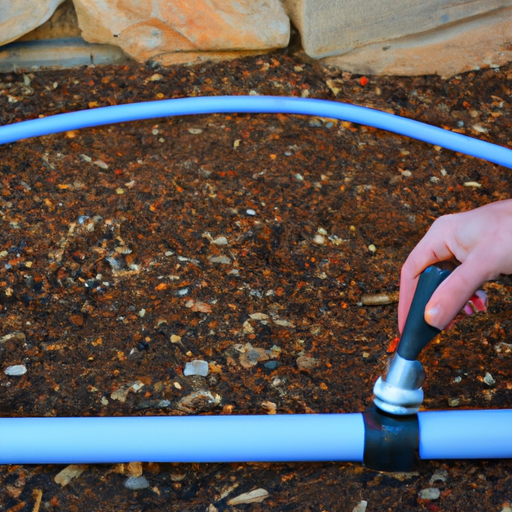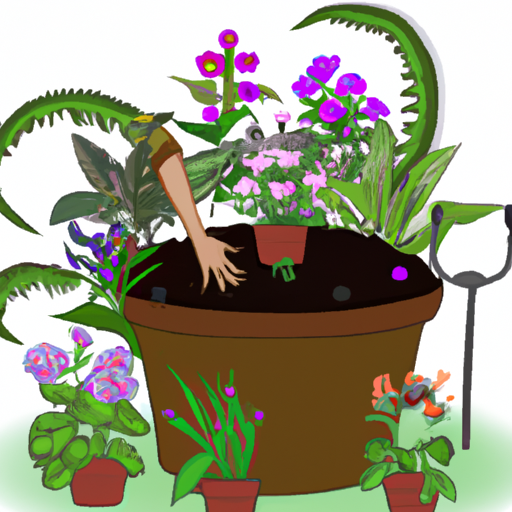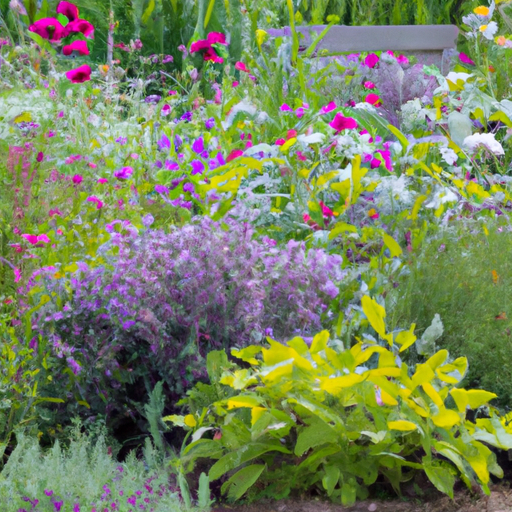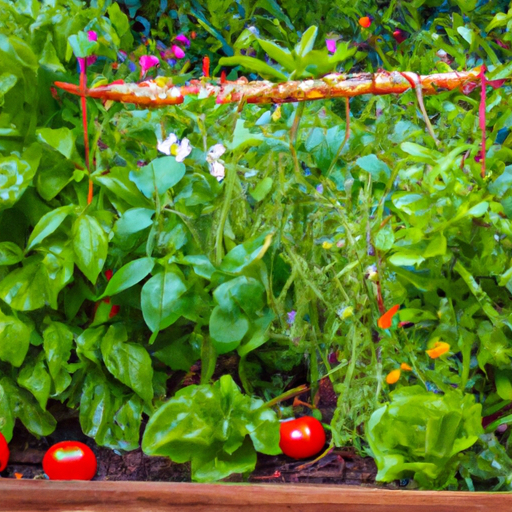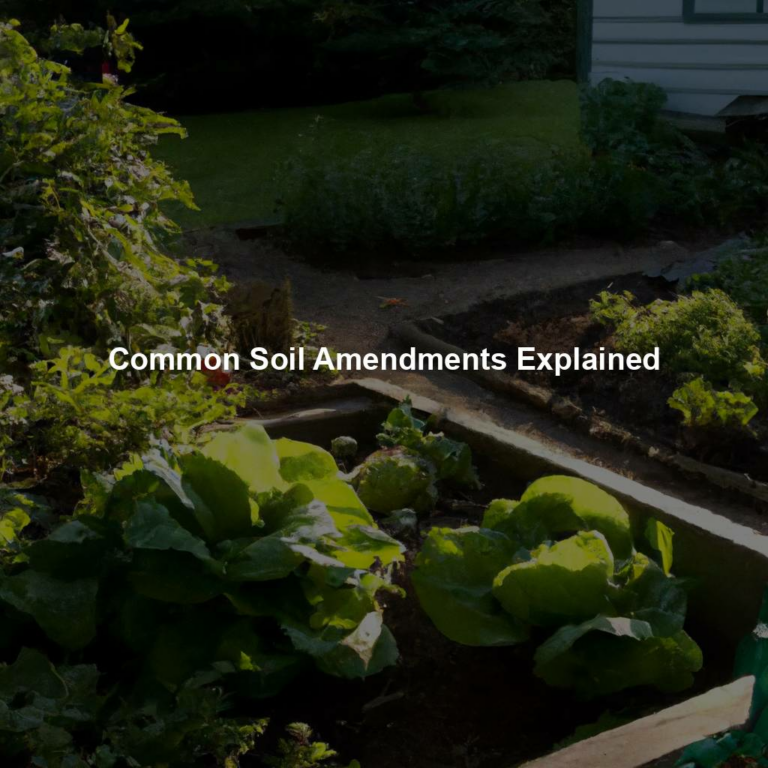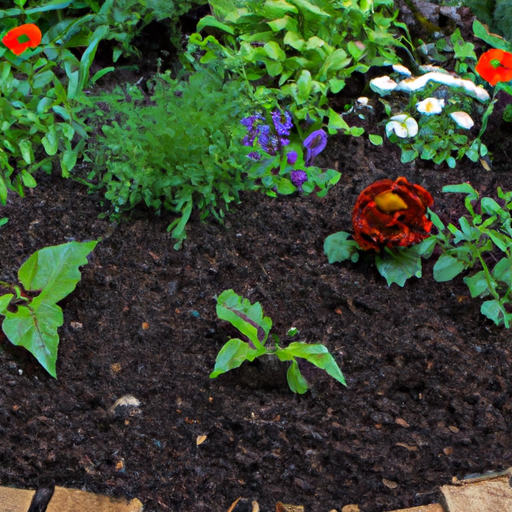Are you tired of constantly watering your plants by hand? Do you want to conserve water while still keeping your garden thriving? If so, installing a drip irrigation system may be the solution for you.
With just a few simple steps, you can have an efficient and effective way to keep your plants hydrated without wasting precious resources.
In this step-by-step guide, we will walk you through the process of installing your own drip irrigation system. From planning and design to installation and maintenance, we’ll cover everything you need to know to get started.
Whether you’re new to gardening or a seasoned pro looking for a more sustainable method of watering, this guide is perfect for anyone interested in learning how to install their own drip irrigation system.
So grab your tools and let’s get started!
Planning Your Drip Irrigation System
As a Master Gardener, designing and installing your own drip irrigation system can save you time and water while improving the health of your plants. Before beginning any installation, there are important design considerations to make, such as selecting the appropriate water source for your specific needs.
Whether you choose city or well water, it is essential that you test its quality to ensure it will not harm your plants. Once you have chosen a safe water source, consider factors like soil type, plant spacing, and slope of the land when determining how many emitters and tubing lengths you will need.
Proper planning ensures a successful installation that saves both time and resources in the long run.
Gathering Your Materials And Tools
Before you begin installing your own drip irrigation system, it’s important to gather all the necessary materials and tools. Choosing appropriate materials is crucial for ensuring that your system works efficiently and effectively. Look for high-quality drip tubing, connectors, emitters, filters, pressure regulators, and timers from reputable suppliers.
In addition to these essential materials, you’ll also need a variety of tools for the installation process. These include a utility knife or scissors for cutting tubing, pliers or wrenches for tightening fittings, hole punches or drills for creating holes in the tubing, and a measuring tape to ensure proper spacing between emitters.
When gathering your tools and materials, be sure to create two sub-lists: one list of materials and another list of tools needed.
Materials
– Drip tubing
– Connectors
– Emitters
– Filters
– Pressure regulators
– Timers
Tools
– Utility knife/scissors
– Pliers/wrenches
– Hole punch/drill
– Measuring tape
For example, by having these lists prepared ahead of time, you can ensure that you have everything you need before starting the installation process.
Once you have gathered all of your supplies and equipment, you will be ready to move on to the next step in installing your own drip irrigation system without any delays or setbacks.
Installing Your Drip Irrigation System
Did you know that drip irrigation can save up to 50% more water than traditional sprinkler systems?
This is because drip irrigation delivers water directly to the roots of your plants, minimizing evaporation and runoff.
As a Master Gardener, I highly recommend installing a drip irrigation system in your garden for its numerous benefits.
But before you start digging trenches, it’s important to choose the right emitters for your specific needs.
Whether you have large shrubs or delicate seedlings, there are different types of emitters that will work best.
Consider using micro-sprinklers for larger areas or drippers for individual plants.
With the right emitters in place, your plants will receive just the right amount of water they need without wasting any.
So take some time to research and choose wisely before beginning installation.
Maintaining Your Drip Irrigation System
Now that you have successfully installed your drip irrigation system, it’s important to maintain it properly to ensure its longevity and effectiveness. Here are some tips from a Master Gardener on how to do just that:
– Regularly check the water pressure: A drop or increase in water pressure can affect the flow of water through your emitters.
– Inspect the drip emitters regularly: Make sure they are not clogged with debris or dirt. Clogs can reduce the output of water and even stop it completely.
– Adjust the emitter spacing as needed: As plants grow, they may need more or less water depending on their size and development stage. Adjusting the spacing between emitters will allow you to tailor watering to meet those needs.
– Monitor the soil moisture level: With a drip irrigation system, it is easy for soil to become too wet if there is excessive watering. Use a probe or meter to monitor moisture levels so you can adjust watering accordingly.
– Flush out the system at least once per season: Flushing helps remove any built-up sediment and mineral deposits that could affect performance.
By following these simple maintenance steps, you’ll be able to keep your new drip irrigation system working optimally for years to come without worrying about issues like low water pressure or clogged emitters. Happy gardening!
Troubleshooting Common Issues
Troubleshooting Common Issues can be a tricky task, but fear not fellow gardeners! Let’s delve into the depths of drip irrigation and diagnose some common issues that may arise.
First off, repairing leaks is crucial to ensuring your system runs smoothly. Check for any visible damage or holes in tubing and replace as necessary.
If you’re still experiencing trouble, try adjusting water pressure by tweaking the pressure regulator valve – this could potentially resolve any clogs or inconsistent flow.
Remember to routinely check for debris buildup and clean your filters accordingly; it’s all about maintenance when it comes to drip irrigation systems.
By being mindful of these potential hiccups, we can continue on our journey towards successful gardening with ease.
Frequently Asked Questions
How Much Water Pressure Is Required For A Drip Irrigation System?
When it comes to setting up a drip irrigation system, water pressure plays an important role. In fact, it’s one of the most crucial factors that you need to consider during installation.
The ideal pressure for your system will depend on various factors such as the type of plants you’re watering and how many emitters or drippers you plan to use; but generally speaking, a good range would be between 20-40 PSI (pounds per square inch).
Keep in mind that if the pressure is too low, your plants won’t receive enough water and if it’s too high, there may be leaks or even burst pipes.
To ensure proper water pressure, investing in a pressure regulator is highly recommended. Additionally, installing a filter can help prevent clogs caused by debris from entering your system which can reduce flow rates and cause uneven distribution of water.
By following these simple installation tips and keeping track of your water pressure levels regularly, you’ll be able to maintain optimal efficiency and yield healthier crops with minimal waste.
How Do You Determine The Size Of The Tubing Needed For Your Drip Irrigation System?
Calculating the size of tubing needed for your drip irrigation system can be a real head-scratcher. But fear not, dear gardener! Measuring tubing is a breeze if you enjoy solving complex mathematical equations in your free time.
And don’t forget to factor in calculating flow rate – it’s just another fun challenge to add to the mix! As any Master Gardener worth their salt knows, installing an efficient drip irrigation system requires attention to detail and careful planning.
So roll up those sleeves and let’s get started on determining the perfect tubing size for your garden oasis!
Can A Drip Irrigation System Be Used For Plants In Containers Or Raised Beds?
Yes, a drip irrigation system can definitely be used for plants in containers or raised beds.
Container irrigation involves using small tubing and emitters to deliver water directly to the roots of your potted plants.
Raised bed irrigation typically requires larger tubing and more powerful emitters to cover a greater area.
However, both methods are highly effective at conserving water and promoting healthy plant growth.
With proper planning and installation techniques, you can easily set up a drip irrigation system that caters to all of your container or raised bed gardening needs.
Can A Drip Irrigation System Be Installed On A Sloped Terrain?
Yes, a drip irrigation system can be installed on sloped terrain. It is actually an ideal solution for areas with uneven ground as it helps to conserve water and prevent soil erosion.
However, proper planning and installation are crucial in ensuring that the system works effectively. Drip irrigation system maintenance is also important to ensure its longevity and cost effectiveness.
Regularly checking for leaks or clogged emitters will help avoid wasting water and money on repairs. Overall, investing in a drip irrigation system can save you time and effort while benefiting your plants and wallet in the long run.
What Are The Benefits Of Using A Drip Irrigation System Over Other Irrigation Methods?
When it comes to irrigating your garden or landscape, there are many methods available. However, if you’re looking for a method that conserves water and promotes plant health, look no further than drip irrigation systems.
Unlike traditional sprinkler systems, which can waste a lot of water due to evaporation and overspray, drip irrigation delivers targeted amounts of water directly to the roots of your plants. This not only saves water but also helps prevent disease by keeping foliage dry.
Plus, with the ability to automate watering schedules and adjust flow rates as needed, drip irrigation is both convenient and efficient.
Conclusion
In conclusion, installing your own drip irrigation system is a great way to conserve water and provide the necessary hydration for your plants. With just a few simple steps, you can create an efficient system that will save you time and money in the long run.
Did you know that using a drip irrigation system can reduce water usage by up to 60%? That’s right! By delivering water directly to the roots of your plants, there is less evaporation and runoff compared to traditional sprinkler systems. This means not only are you saving water, but also reducing your overall water bill.
As a Master Gardener, I highly recommend considering a drip irrigation system for your garden. Not only does it promote healthy plant growth, but it also allows for precise watering control which can lead to higher yields and better crop quality.
Take some time to plan and install your own system today – your plants (and wallet) will thank you!
